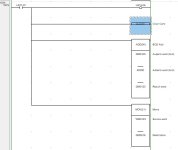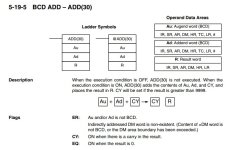ceilingwalker
Lifetime Supporting Member
Hello, I would like to know when/why one would use the Clear Carry (CLC) instruction before performing arithmetic operations for a C200HX. The reason I ask is, this logic I am trying to understand will sometimes turn off the CY bit prior to performing math and then, at other times, they didn't. The only guess I could make is that they were anticipating there would be a carry and they wanted to make sure any carry that may have been left-over doesn't show up in the math operation that is about to be executed?









